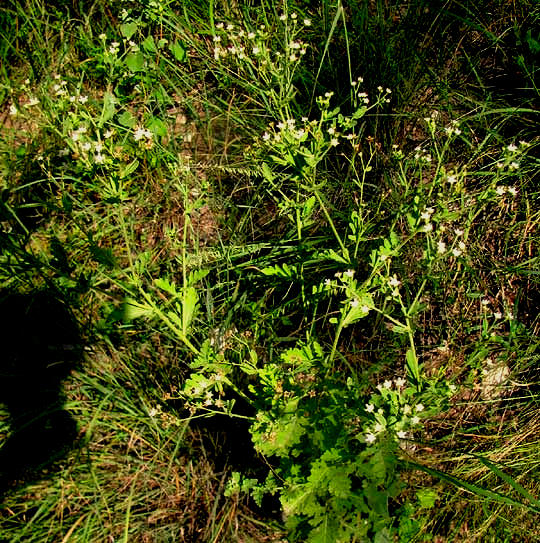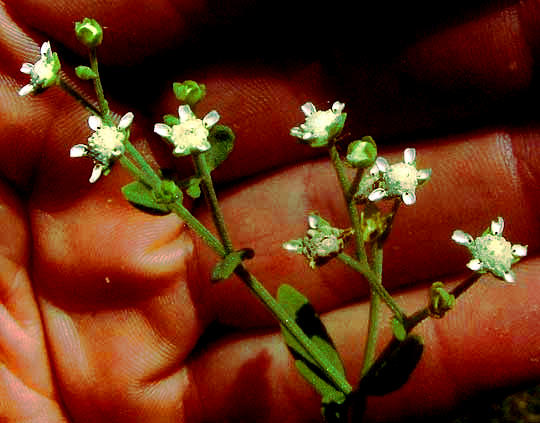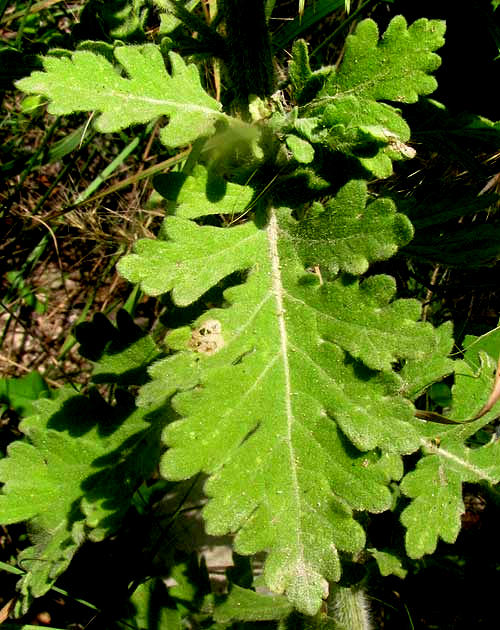Excerpts from Jim Conrad's
Naturalist Newsletter
from the August 11, 2013 Newsletter issued from the Frio Canyon Nature Education Center in the valley of the Dry Frio River in northern Uvalde County, southwestern Texas, on the southern border of the Edwards Plateau; elevation ~1750m (~5750 ft); N29.62°, W99.86°; USA
LYRELEAF PARTHENIUM
In the Yucatan one of the most common weeds sprouting up in sidewalk cracks and in dry, compacted soil along highways was one often called Feverfew in English. It was the Composite/Sunflower-Family member Parthenuium hysterophorus. That invasive, tropical and subtropical species is also common here. Our page on the species is at http://www.backyardnature.net/yucatan/feverfew.htm.
Here in southwestern Texas there's a very similar native "feverfew," the one shown below, growing in a natural prairie patch:

The flowering heads are the two species are almost identical. You can see our prairie species' heads below:

However, the two species are easy to distinguish because their leaves look different. The lobes of our prairie species' leaves are broader and less divided than on leaves of the weedy species, as shown below:

Our prairie species is PARTHENIUM CONFERTUM, in books often referred to as the Lyreleaf Parthenium, though any parthenium species might be called a feverfew.
Our Lyreleaf Parthenium mostly occurs in arid northern Mexico, but extends into the US in southwestern Texas and southern New Mexico and Arizona. It's not weedy like its look-alike relative. The Flora of North America describes its habitat as "Sandy plains, openings in mesquite grasslands." In our area they're in grassy spots whether mesquites are nearby or not.
By the way, the most famous Parthenium is Parthenium argentatum, commonly known as Guayule. Historically Guayule was collected for its white latex, which could be boiled down to make rubber; efforts were made to grow it for rubber during World War II. Nowadays Guayule is being planted again because rubber made from its latex is more stretchable than synthetic rubber, and is less likely to cause allergic reactions than other forms of natural rubber.